Smart Beta vs Factors in Portfolio Construction
Smart Beta Might Not Be So Smart for Portfolios
August 2017. Reading Time: 10 Minutes. Author: Nicolas Rabener.
SUMMARY
- Investors seek smart beta products for risk reduction
- However, smart beta products are effectively long-only products with full equity risk
- Only factor products, i.e. long-short portfolios, offer true diversification benefits and downside protection
INTRODUCTION
FTSE Russell’s 2017 Smart Beta Investor Survey showed that the Nr 1 objective for evaluating smart beta strategies was for risk reduction, followed by return enhancement. Naturally there are many types of smart beta strategies available to investors today, however, they are nearly all long-only products. If equity markets crash, then smart beta products will also crash and would not substantially reduce portfolio risks, i.e. fail the investment objective. In this short research note we will compare the difference between investing in smart beta versus factor products for an equity-centric portfolio (read Smart Beta vs Factor Returns).
METHODOLOGY
We’re going to focus on the S&P 500 and just two factors: Value and Growth. Given that these factors don’t tend to correlate, there should be some diversification benefits for the portfolio. In terms of smart beta we have chosen two products from Blackrock: IVE, the iShares S&P 500 Value ETF, and IVW, the iShares S&P 500 Growth ETF. Both of these have +$10bn AUM and a trading history of almost 20 years.
We calculate the factor performance for Value and Growth by creating long-short portfolios comprised of the top and bottom 30% of the US stock universe. The portfolios are constructed dollar-neutral and include 10bps of transaction costs (read Factor Construction: Beta vs $-Neutrality).
SMART BETA & FACTORS VS THE S&P 500
Before we move to portfolio construction, it’s worth familiarizing ourselves with the return profiles of the smart beta ETFs and factors. The chart below shows the performance of the smart beta ETFs for Value & Growth and the S&P 500. We can see that Value outperformed the S&P 500 and Growth from 2000 to the start of the Global Financial Crisis (GFC) in 2007. From 2010 onward Growth was the winning strategy.
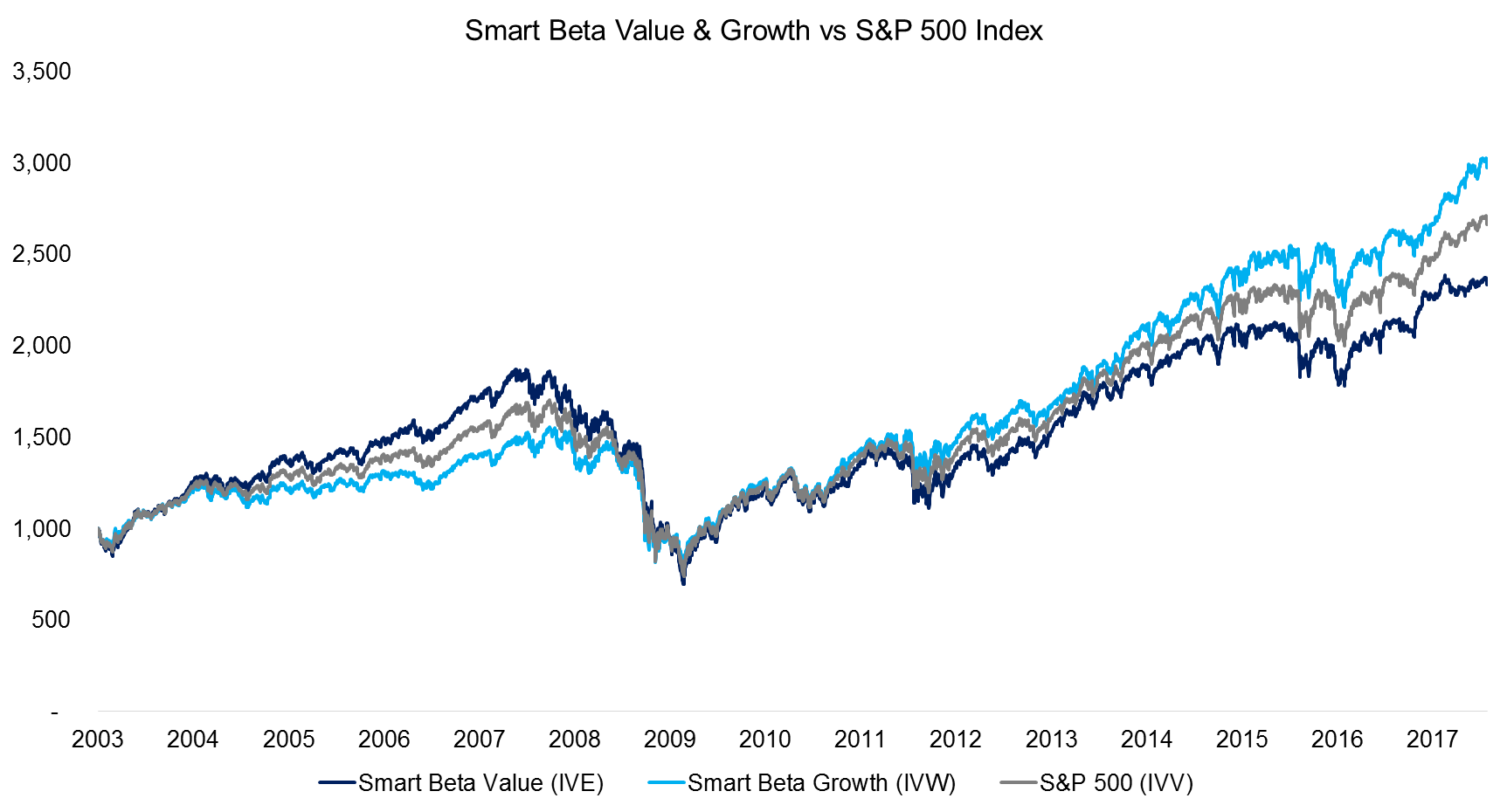
Source: Blackrock, FactorResearch
The next chart shows the performance of the S&P 500 vs the Value and Growth factors. Given that these are long-short portfolios, they look dramatically different than the index, however, the underlying trends seen in the smart beta ETFs are the same. Value outperformed the first few years and then Growth did better.
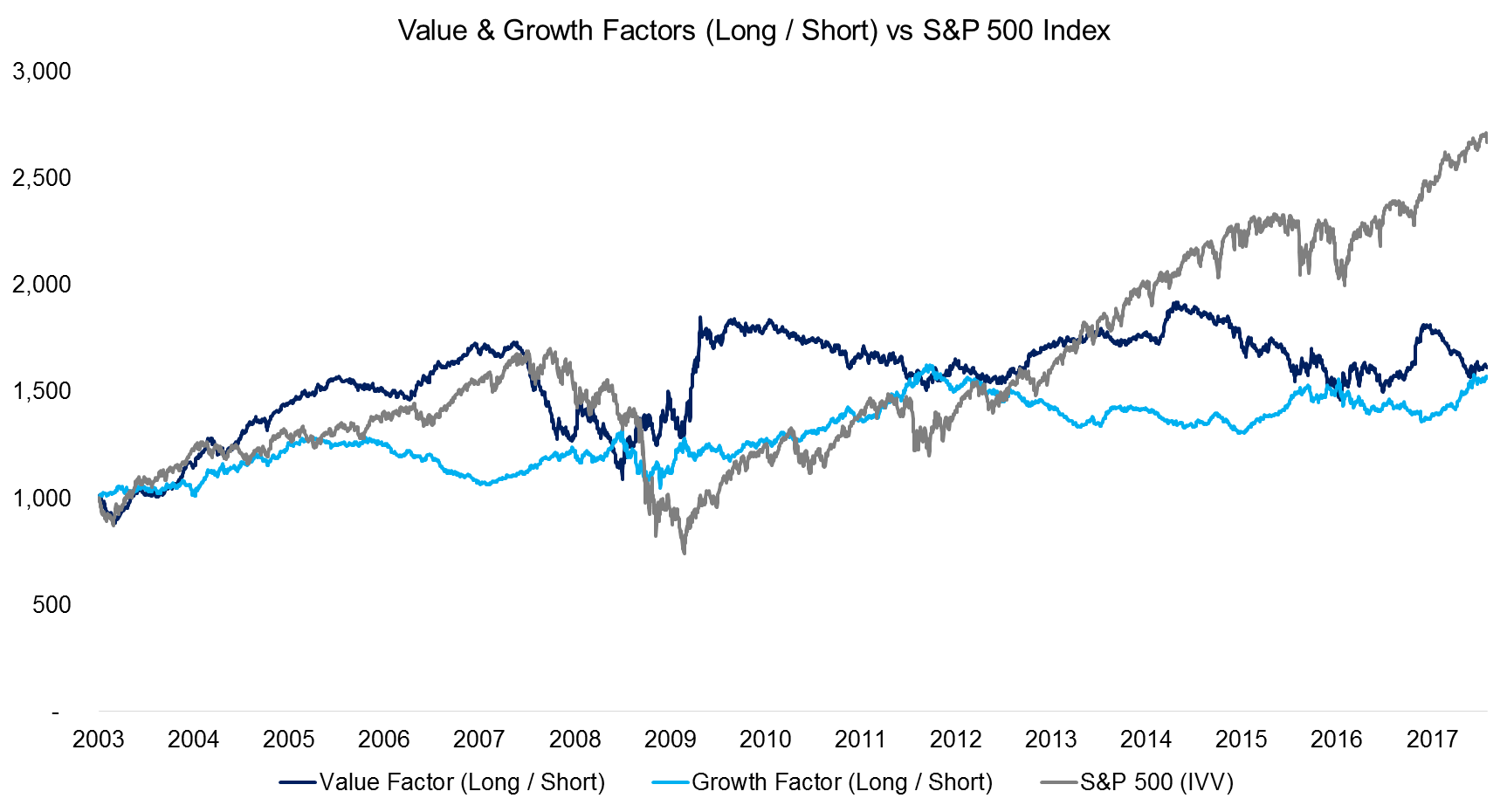
Source: FactorResearch
Having observed the smart beta and factor performance compared to the index naturally raises questions about the correlations. The smart beta ETFs look almost identical to the index while the long-short portfolios behave quite differently. The correlations below show that both smart beta ETFs have correlations of 0.99 to the S&P 500, compared to almost zero correlations for the long-short factor portfolios.
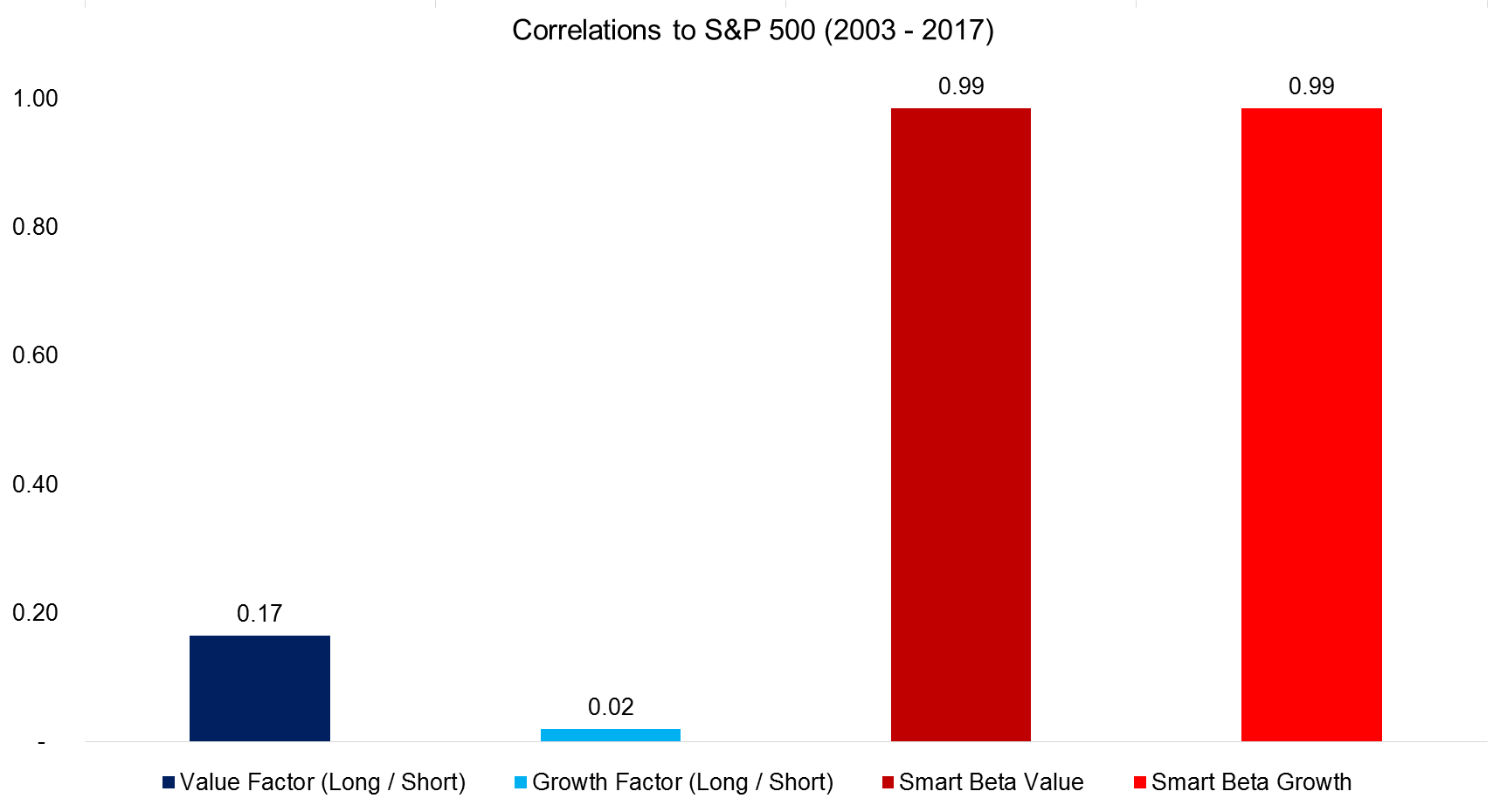
Source: FactorResearch
SMART BETA VS FACTORS IN PORTFOLIO CONSTRUCTION
As a next step we create two simple portfolios: one consisting of the S&P 500 (60% allocation) and the smart beta ETFs (20% & 20%) and another one of the S&P 500 (60%) and the factors (20% & 20%). The portfolios are rebalanced annually. We can observe the performance of the portfolios below, where the smart beta portfolio outperforms the factor portfolio. Given that the smart beta ETFs are nothing but index proxies (the S&P line is hidden behind the smart beta portfolio) and the equity markets have been rising in general over this 14 year period, this is not a surprising result.
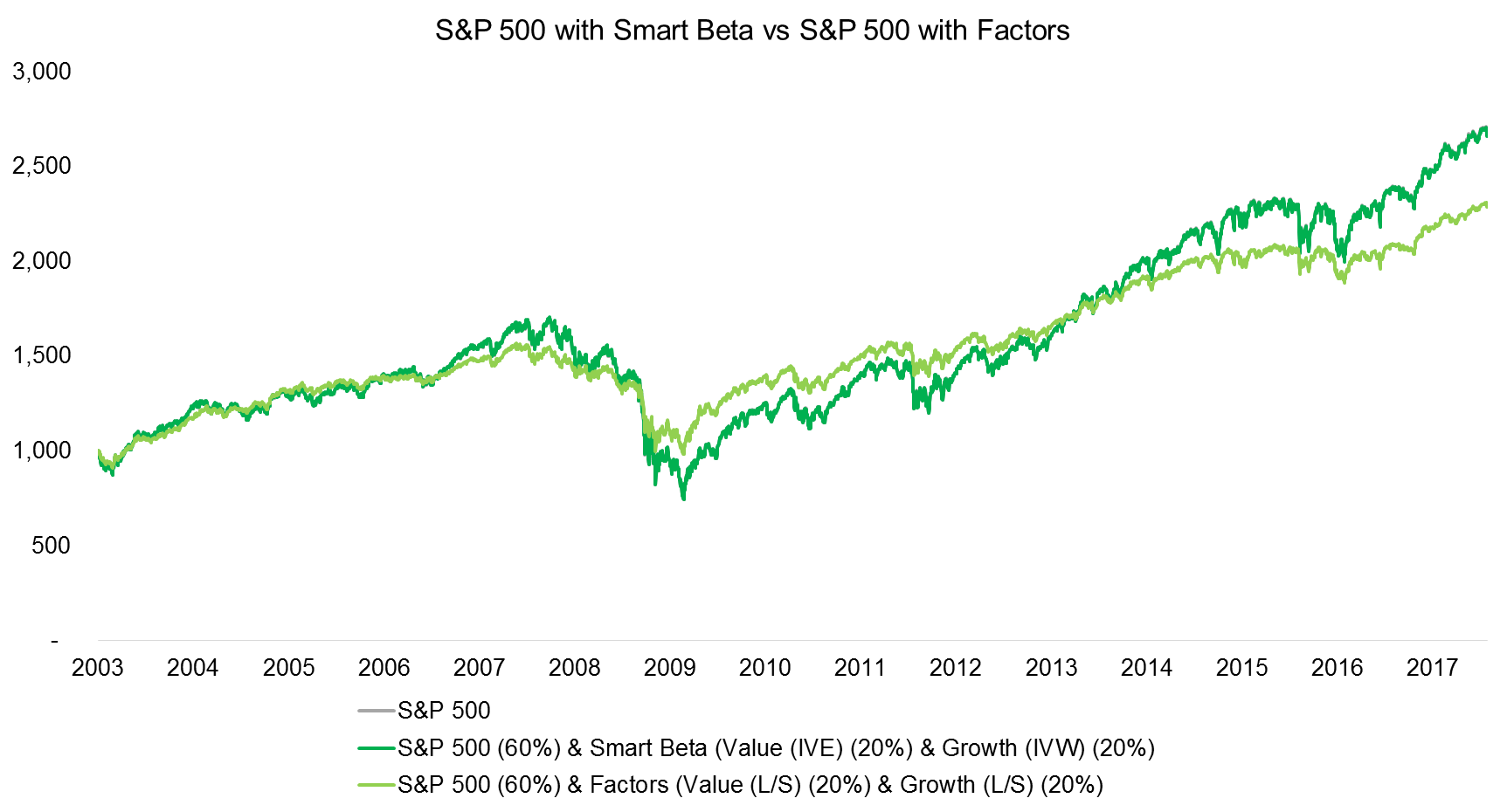
Source: FactorResearch
As investors stated “risk reduction” as an investment objective for smart beta, it’s worth looking at the risk-return ratios of the portfolios. We can see the S&P 500 achieved a 0.46 risk-return ratio, which is in line with the historical average since the 1920s. Adding the smart beta ETFs did not increase the risk-return ratio, however, adding factor exposure did significantly increase the ratio to 0.62.
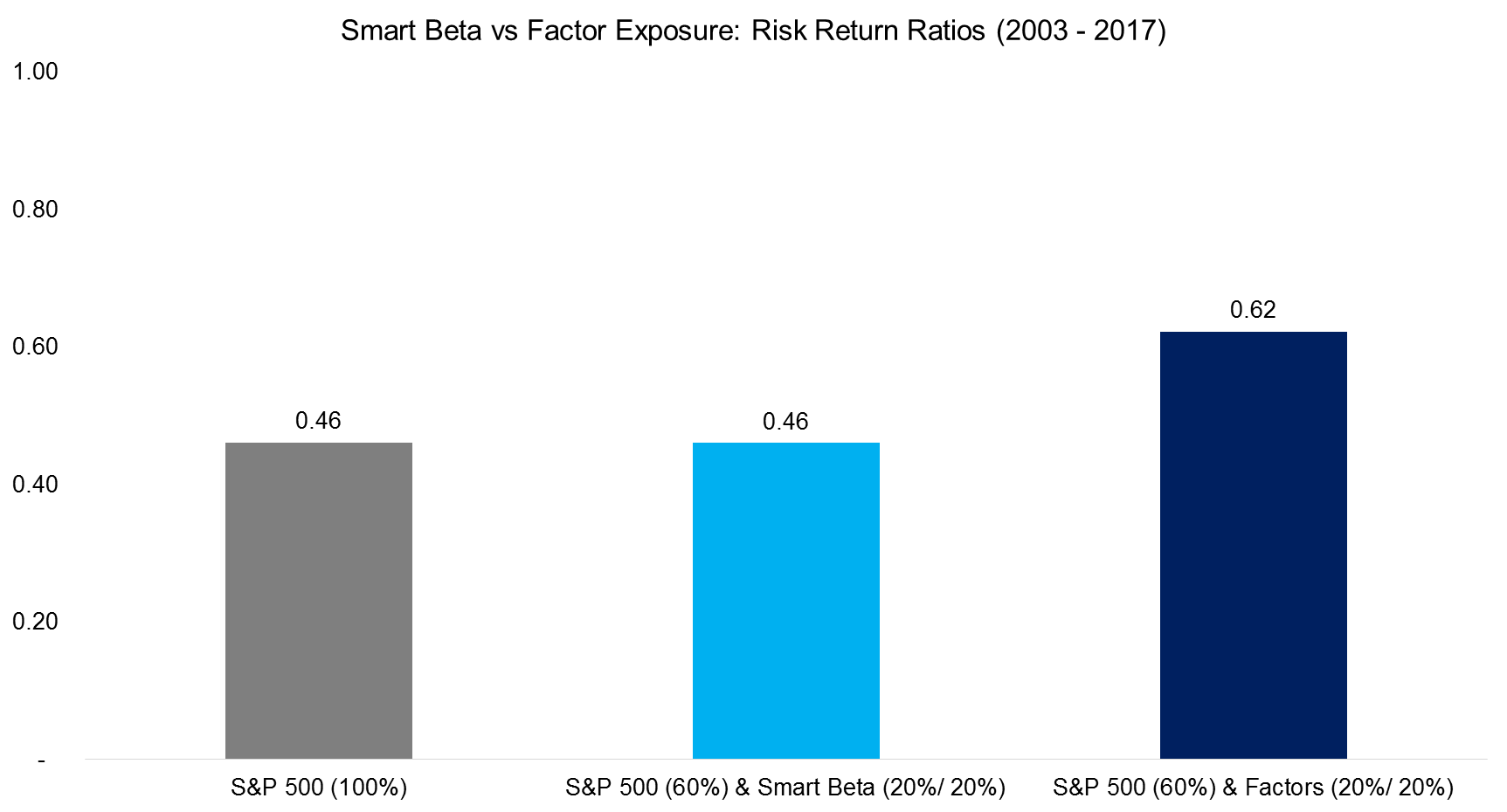
Source: FactorResearch
A common criticism of quantitative strategies is that you can’t “eat” a risk-return ratio, highlighting that optimising this metric is not always meaningful. While this is fair criticism, we would argue that you can’t “sleep” with significant drawdowns either as investors tend to lose their faith in equity markets at some point, usually at the bottom of a bear market. The S&P 500 and smart beta portfolios experienced an identical drawdown of 56% in the GFC, compared to 37% for the factor portfolio, which is much more acceptable for investors to live with.
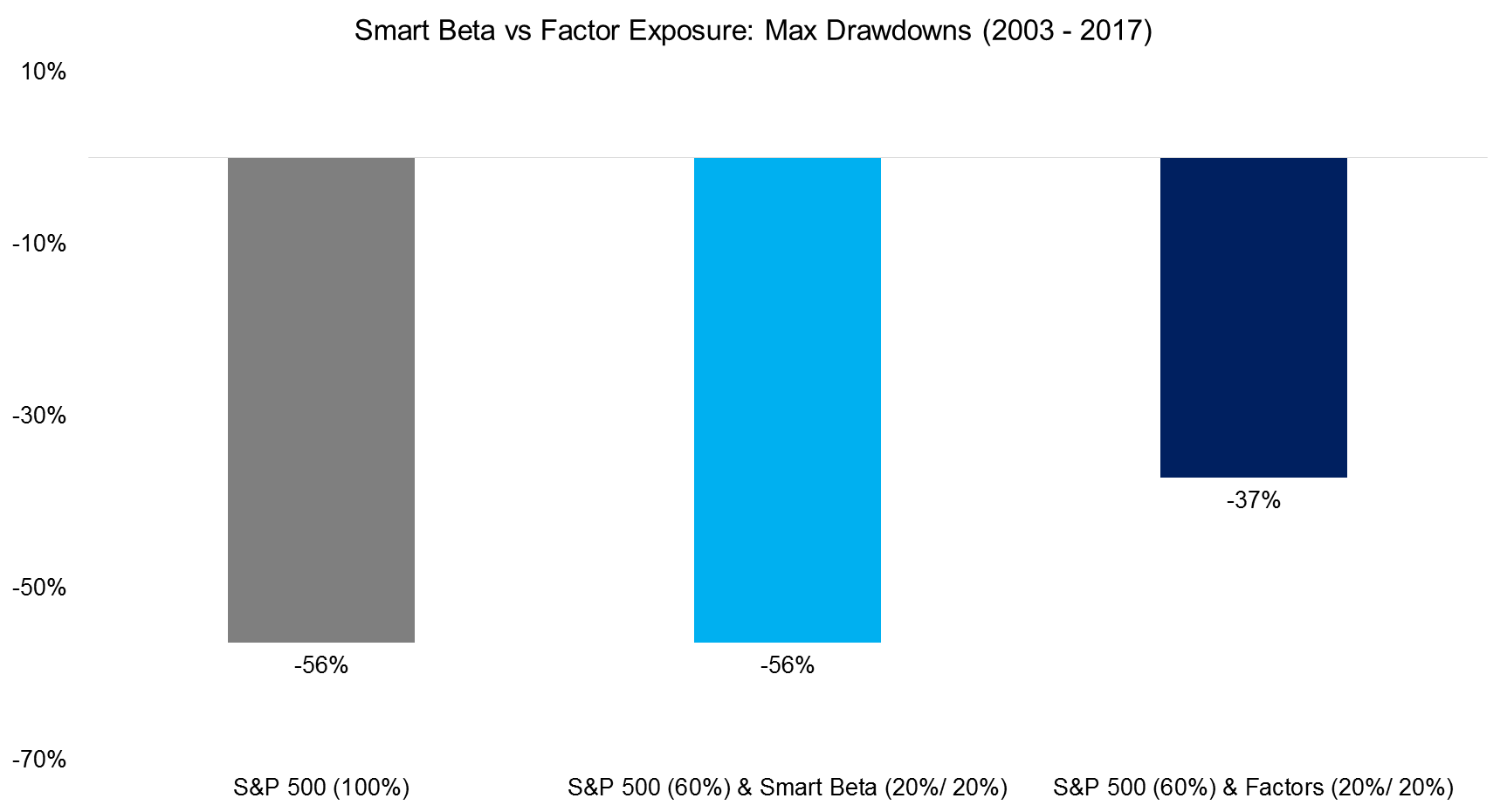
Source: FactorResearch
FURTHER THOUGHTS
This short note highlights that one of the primary motives for buying smart beta ETFs is risk reduction, but that the products fail at this. Naturally we only looked at two types of smart beta strategies, i.e. Value and Growth, and have ignored Size, Momentum, Low Volatility, and others. There is likely some risk reduction if more factors are added, but given that nearly all smart beta ETFs are long-only products, the risk reduction is limited.
Smart beta ETFs are useful investment products, but investors should only consider them for replacing existing equity funds or ETFs. In order to effectively reduce risk, long-short factor products should be considered. Currently there are only few investible factor products traded on public markets and the majority are sold as risk premia strategies by investment banks. Hopefully this will change over time, so that investors can purchase factors instead of proxies with equity risk.
ABOUT THE AUTHOR
Nicolas Rabener is the CEO & Founder of Finominal, which empowers professional investors with data, technology, and research insights to improve their investment outcomes. Previously he created Jackdaw Capital, an award-winning quantitative hedge fund. Before that Nicolas worked at GIC and Citigroup in London and New York. Nicolas holds a Master of Finance from HHL Leipzig Graduate School of Management, is a CAIA charter holder, and enjoys endurance sports (Ironman & 100km Ultramarathon).
Connect with me on LinkedIn or X.

